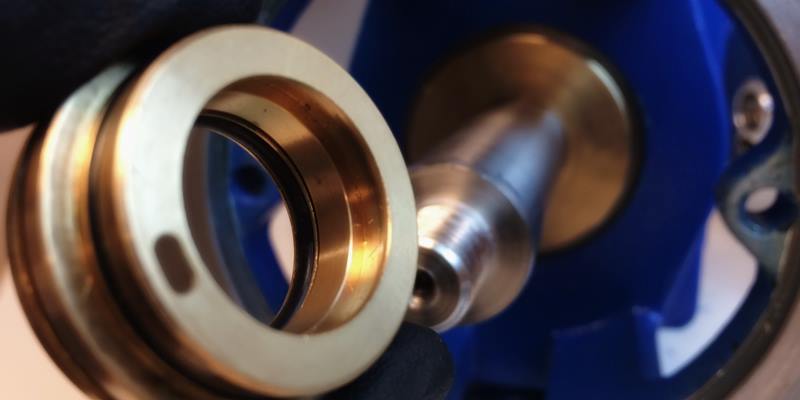
While there is much discussion about which bearing protector works the best, it is safe to say that the worst bearing protector will protect bearings significantly longer than the best oil seal.
The ASLE (American Society of Lubrication Engineers) have determined that the equivalent of one drop of water inside a bearing housing can reduce bearing life 48%. What happens is that the drop of water will eventually get under the bearing ball and cannot support the load that oil or grease can support. As a result, the metal bearing race gets deformed outside its plastic limit where it can return to its original dimension. From then on, every time that part of the race gets a load on it, it deforms in its plastic range until it fails.
The use of oil seals in ANSI pumps is rapidly diminishing in favor of bearing protectors. Bearings can have a legitimate design life of several decades. But if you take the time to study the information provided by the oil seal industry, you’ll find that the legitimate design life for oil seals in typical applications is measured in days up to a few months.
People have tried both multiple oil seals and reversing the direction of the curl of the oil seal lip. The issue with multiple lips is that the outer lips run dry and have a very short life. Plants have tried reversing the oil seal installation. A single lip facing towards the bearing does a little better keeping the lubrication in but not as good a job in keeping contamination out. Reversing the direction of the lip creates the opposite outcome, better at keeping the contamination out but a poorer job of keeping the lubrication in. And, the lip itself can imbed with solid particles and score the shaft under the lip actually opening up the clearance for contamination to enter and lubrication to escape.
Bearing protectors can be made of bronze, stainless steel, PTFE or some other plastics or even a combination of two different materials. Bearing protectors can be reused as they are a non-contact sealing device. Bearing protectors consist of two pieces that are usually unitized. This means that the two pieces do not come apart. The two pieces can be described as a rotor and a stator. The rotor acts as a slinger. Water and bearings do not mix. Whether the source of unwanted liquid is a leaky mechanical seal or packing, water from a cleanup hose, or wet weather if the pump is outside….
The other component of a bearing protector is the stator. This is usually a labyrinth. Most ANSI pumps use the shaft to rotate the oil slinger inside the bearing housing to sling the oil around to lubricate the bearings. It splashes everywhere by design. The labyrinth catches the slung oil in a series of thin lips, hence the term labyrinth. Gravity allows the oil to slide down to the bottom of the labyrinth where there is either an angled trough or one or more drain holes that allow the captured oil to return to the sump area of the bearing housing.
One less understood benefit of bearing protectors is that should a catastrophic bearing failure take place, the bearing protector can act as a sacrificial disaster bushing and can protect the running gear from being destroyed. A few hundred dollars for a new bearing protector is better than a several thousand dollars for new running gear.
A good practice is the use of root cause failure analysis for bearings as well as for mechanical seals and packing. The use of RCFA coupled with a strong managed lubrication program yields benefits that are a multiple of the cost of the program.
Other Resources:
Labyrinth Seals and Lip Seals: An Economic Comparison
Understanding Bearing Housing Protection and Reliable Lubricant Application
